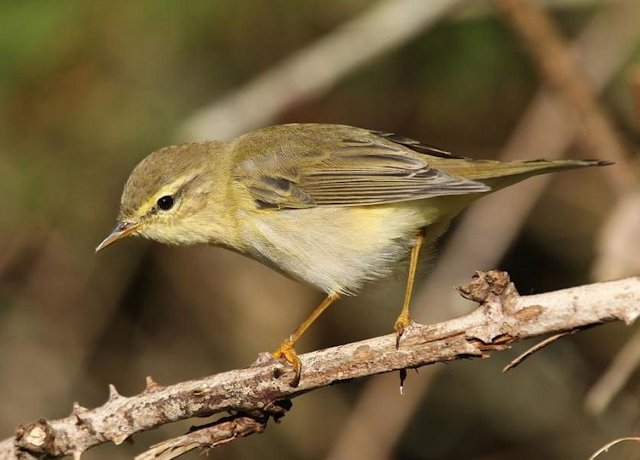Willow Warbler
 Willow Warbler
Willow Warbler
NL: Fitis
D: Fitis
F: Pouillot fitis
Latin name: Phylloscopus trochilus (Linnaeus, 1758)
Bird group: Warblers
The willow warbler (Phylloscopus trochilus) is a very common and widespread leaf warbler which breeds throughout northern and temperate Europe and the Palearctic, from Ireland east to the Anadyr River basin in eastern Siberia. It is strongly migratory, with almost all of the population wintering in Sub-Saharan Africa.
It is a bird of open woodlands with trees and ground cover for nesting, including most importantly birch, alder, and willow habitats. The nest is usually built in close contact with the ground, often in low vegetation. Like most Old World warblers (Sylviidae), this small passerine is insectivorous. In northern Europe, it is one of the first warblers to return in the spring, though later than the closely related chiffchaff.
The willow warbler is a typical leaf warbler in appearance, 11–12.5 cm long and 7–15 g weight. It is greenish brown above and off-white to yellowish below; the wings are plain greenish-brown with no wingbars. Juveniles are yellower below than adults. It is very similar to the chiffchaff, but non-singing birds can be distinguished from that species by their paler pinkish-yellow legs (dark brown to blackish in chiffchaff), longer paler bill, more elegant shape and longer primary projection (wingtip). Its song is a simple repetitive descending whistle, while the contact call is a disyllabic ‘hoo-eet’, distinct from the more monosyllabic ‘hweet’ of chiffchaffs.
Song/call:

